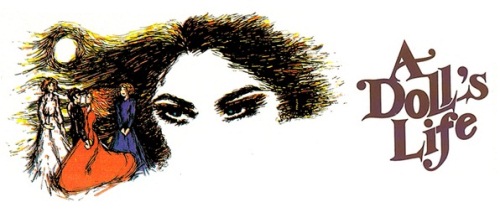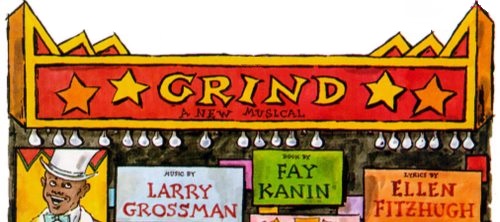Pas de biographie disponible.
Compositeur Musique additionelle Librettiste Parolier Metteur en scène Chorégraphe Producteur création Producteur version

Musical
Musique: Larry Grossman • Paroles: Livret: Hal Hackady • Production originale: 5 versions mentionnées
Dispo: Résumé Synopsis Génèse Liste chansons
Genèse: San Francisco (1975) Snoopy: The Musical premiered on December 9, 1975 at the Little Fox Theatre in San Francisco, California. Directed by Arthur Whitelaw, the cast featured Don Potter, Jimmy Dodge, and Pamela Myers. Off-Broadway (1982-1983) The musical was produced Off-Broadway at the Lamb's Theatre from December 20, 1982 through May 1, 1983. Directed by Whitelaw, the cast included David Garrison as Snoopy, Terry Kerwin as Charlie Brown and Vicki Lewis as Peppermint Patty. Lorna Luft played Peppermint Patty starting on February 21, 1983. Canadian Premiere (1983) The musical was first produced legitimately in Canada by the Toronto Civic Light Opera Company in January 1983. Directed by Joe Cascone, the cast included Brad Donovan, Fiona Watt, Alicia mcShane and John McGregor. The company revived the show in 1995 with Cascone now playing the title role, featuring Julie Lennick, Eddy Morassutti, Jay Crawford. West End (1983-1984) The musical ran at the West End Duchess Theatre from September 20, 1983 through November 11, 1984 for 479 performances, starring Teddy Kempner as Snoopy and featuring Susie Blake. The production was nominated for the Olivier Award for Musical of the Year, and Kempner was nominated for Actor of the Year in a Musical. West End revival (2003) Snoopy was revived at the West End Jermyn Street Theatre in February 2003 for 14 performances. It was directed by Joseph Pitcher and featured Stephen Carlile as Snoopy and Neil Gordon-Taylor as Charlie Brown. New York concert (2004) A concert presentation of Snoopy! was held at the Peter Norton Symphony Space in Manhattan, New York City, on April 12, 2004. Christian Borle starred in the title role, with Deven May as Charlie Brown, Sutton Foster as Peppermint Patty, Ann Harada as Lucy, Hunter Foster as Linus, and Jennifer Cody as Sally. London (2004) The musical ran at the New Players Theatre in London, in July 2004, with several cast members from the Jermyn Street production and again directed by Whitelaw, the original director.
Résumé: The Peanuts characters, Snoopy, Woodstock, Charlie Brown, Sally Brown, Lucy van Pelt, Linus van Pelt and Peppermint Patty are depicted in the musical. The show takes the form of a series of self contained vignettes but the overall theme is of Snoopy's growing independence which makes Charlie Brown feel increasingly insecure. The following songs are featured in the musical, those marked (*) were originally added for the 1982 London performance.
Création: 9/12/1975 - Redwood City (San Francisco) - représ.

Musical
Musique: Larry Grossman • Paroles: Adolph Green • Betty Comden • Livret: Adolph Green • Betty Comden • Production originale: 0 version mentionnée
Dispo: Résumé Synopsis Génèse Isnpiration Liste chansons
Genèse: The Broadway production opened at the Mark Hellinger Theatre on September 23, 1982 and closed on September 26 after 5 performances and 18 previews. Directed by Hal Prince and choreographed by Larry Fuller with scenic design by Timothy O'Brien and Tazeena Firth, costume design by Florence Klotz, and lighting design by Ken Billington. The cast featured George Hearn, Betsy Joslyn, and Peter Gallagher. The York Theater Company, New York City, presented a staged concert in December 1994. Reviews were negative. According to The New York Times, "It was overproduced and overpopulated to the extent that the tiny resolute figure of Nora became lost in the combined mechanics of Broadway and the Industrial Revolution." According to John Kenrick, the musical had "an almost operatic score, but the book droned on about the unfairness of life and an overly-elaborate Hal Prince production only made matters worse." Despite its failure, the show received several Tony Award nominations, and an original cast recording was released on the Bay Cities label. Broadway wags dubbed the show "A Doll's Death." One even suggested "A Door's Life," in reference to the portal out of which Nora slams at the end of the original Ibsen play, and which 'danced' almost continually throughout the musical, far more interestingly than most of the rest of the action.
Résumé: Set within the framework of a contemporary rehearsal of Henrik Ibsen's classic play A Doll's House, it addresses the question of what might have transpired after Nora slammed the door and abandoned her tyrannical husband Torvald. Borrowing the fare from a young violinist, Otto, she takes the train to Christiania, where she accepts work in a cafe and soon becomes involved not only with Otto, but Eric Didrickson, the wealthy owner of shipping lines and fish canneries, and Johan Blecker, a lawyer, as well. Throughout the show, scenes in her new life mingle with intermittent flashbacks to the one she left behind.
Création: 23/9/1982 - Mark Hellinger Theatre (Broadway) - représ.

Musical
Musique: Larry Grossman • Paroles: Ellen Fitzhugh • Livret: Fay Kanin • Production originale: 1 version mentionnée
Dispo: Résumé Liste chansons
Genèse:
Résumé: This musical had an original story. It's set in 1933 Chicago, in Harry Earle's Burlesk [sic] and the city. The burlesque house has two companies, white and black, and as the town is touchy about "mixin'," the companies cannot mingle on or offstage. The principal black characters are LeRoy, the comic, and Satin the stripper; the principal white performer is Gus, a comedian. LeRoy loves Satin but cannot express his feelings to her except in crude, offputting burlesque routines. Gus is going blind and is in danger of losing his career, so he enlists a helper, an Irish bum named Doyle, as his primary stooge. Doyle has his own demons, but he proves to be a useful addition to both companies. For one thing, he's the only person who can ride a bike, so he's picked to deliver a bike to the birthday party of Satin's little brother Grover. Unfortunately, toughs take offense to this mixing of white and black, and the bike is destroyed. LeRoy, unable to deal with the violence, retreats into a burlesque routine. Gus's eyesight is now too poor for him to continue performing, and he commits suicide. Doyle is devastated and disappears during the memorial service. Satin and LeRoy search for him, unsuccessfully; LeRoy is finally able to confess his love for Satin, who is thrilled, and they arrange to meet for dinner. But on her way to meet him, Satin finds Doyle, drunk and being set upon by toughs. She rescues him and takes him home. As he sleeps, he talks, and reveals that he was an Irish terrorist who accidentally killed his wife and son. Next morning, Satin returns to the theatre only to encounter LeRoy, feeling rejected. He humiliates her onstage and then attacks Doyle, causing the two companies to take sides (along racial lines) in the conflict. However, when those ubiquitous toughs invade the theatre, the companies become one company as they fight the common enemy.
Création: 16/4/1985 - Mark Hellinger Theatre (Broadway) - 79 représ.

.png)
.png)




